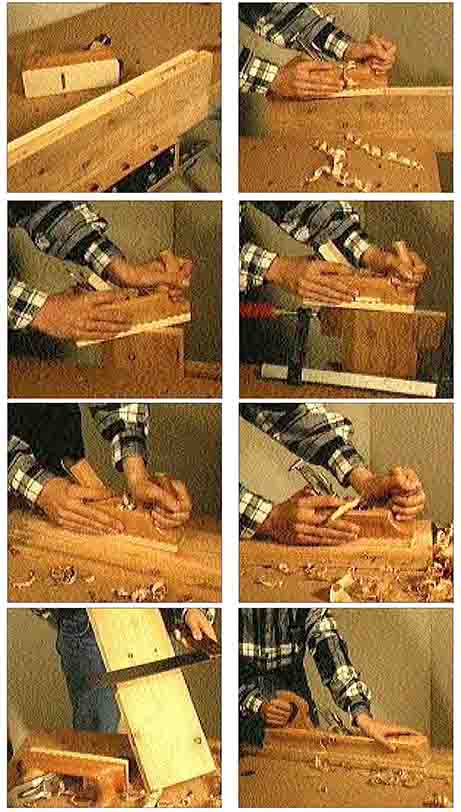 Bumps the edges
Bumps the edges
To plane edges with precise angles, the plane must be guided absolutely straight and with even pressure over the entire length of the workpiece. To do this, it must be clamped firmly and vibration-free. To prevent individual chips from tearing out, you should basically plan with the grain of the wood. With very fine or uneven grain, for example with root wood, the iron must be well sharpened and finely adjusted, and the workpiece must be constantly rotated.
Smooth surfaces
To a rough sawn, but to smooth flat surface, a smoothing plane and a rough bench are sufficient. However, larger bumps or even a thicker layer of wood have to be removed, it is recommended, first use the scraper. He is responsible for the rough work. With his only 33 mm widths, domed irons can be up to 3 mm thick chips can be removed in one go. Then we level the surface with the planer and planed smooth with the roughing bench.
An insert made of scrap wood ensures a safe, even when planing narrow edges, tilt-free support of the plane.
So that the edge doesn't turn out round, the plane must be guided with even pressure without tilting.
When you set the plane at an angle to the direction of impact, it is easier to guide and cuts better.
Prevent scrap pieces of wood that are firmly tensioned on both sides, that the edge ends split off when bumped.

The planer for the rough. With the scraper plane, thicker layers of wood can also be removed in one go.
You can achieve absolutely smooth surfaces with a sharp cleaning plane on short surfaces, silky, shiny wooden surfaces.
When planing, you should constantly check the plane of the planed surface with a steel square.
Due to its length, the rough bench offers advantages for long surfaces. You can also bring it against the fiber.
End grain chipped
brain- or end grain edges are bumped. this means, that the plane is guided over the edge with short strokes away from the body. Because here the fibers have to be cut across, An absolutely sharp plane iron is a prerequisite. So that the opposite edge does not splinter, it can be slightly chamfered beforehand. It is better, however, when end-grain edges are only bumped up to the middle of the board, this is then turned over and the second half is processed.
Proper filing
The blades of the plane iron usually suffer more, when they are not in use than while they are working. For work breaks, planes should always be placed on their side or placed with the front part on a block of wood. The iron should always be pulled back into the planer body during long-term storage and during transport in the tool box.